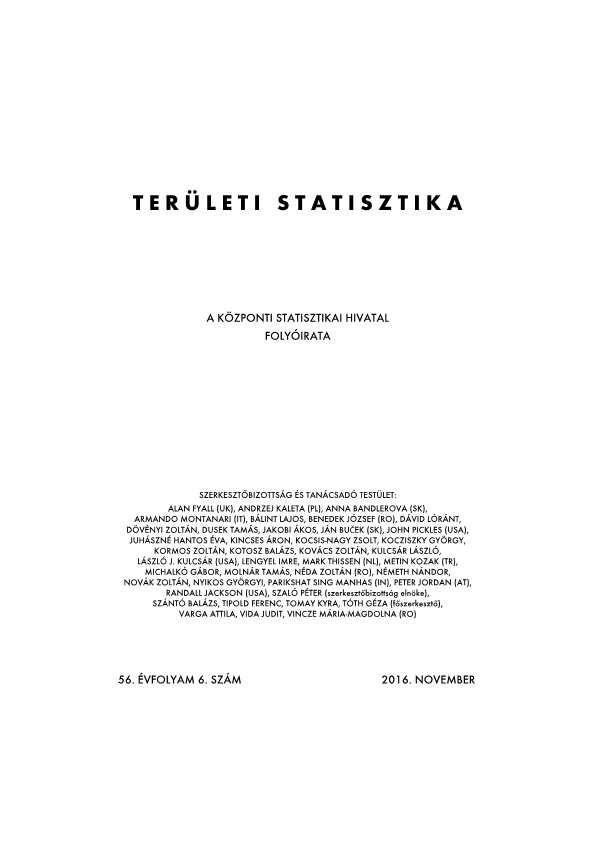Az egyenlőtlen politikai reprezentációt létrehozó
választási földrajzi hatótényezők mérési lehetőségei
Possibilities for measuring electoral geographical factors, that create unequal political representation
Author(s): György VidaSubject(s): Social Sciences, Economy, Geography, Regional studies
Published by: Központi Statisztikai Hivatal
Keywords: electoral geography; electoral systems; disproportionality; geographical distortion; measuring methods
Summary/Abstract: In most of the democracies, one of the central politicalquestions is how the different types of electoral systemstransform the citizens’ votes into seats. The analysis ofthe general electoral process is an interdisciplinaryresearch theme, however, the detection of theimbalance caused by geographic distortions, is a typicalgeographical topic. The literature of internationalresearch is widely available, however, in Hungarianelectoral geography, this issue has not been in theforefront of scientific discourse yet.Thus, the purpose of this paper is to present howelectoral geography detects the disproportions ofelectoral systems (based on Hungarian cases), and howit uses regional statistics to detect geographicaldistortions. Therefore, considering the results of theHungarian parliamentary elections in 2010 and 2014,our aim is to present the dilemmas of the followingstatistical methods: the measuring methods of generalsystematic disproportions in political science,„gerrymandering” and „malapportionment” (thedistorting phenomena of the constituencies ofdifferent sizes).It can be stated that the Loosemore-Hanby’s andthe Gallagher Index (that measure the disproportionsof the general electoral system) are not suitable forexploring the spatial effects. Therefore, to detectgeographical distortions, we can use geographicalmathematicalmethods, or regional statistics. As thenature of geographical distortions is dynamicallychanged by the society’s demographical features, andby the political opinion, it is expedient to examine theunequal political representation in several regionalscales, and with different methods.
Journal: Területi Statisztika
- Issue Year: 56/2016
- Issue No: 06
- Page Range: 643-659
- Page Count: 17
- Language: Hungarian

